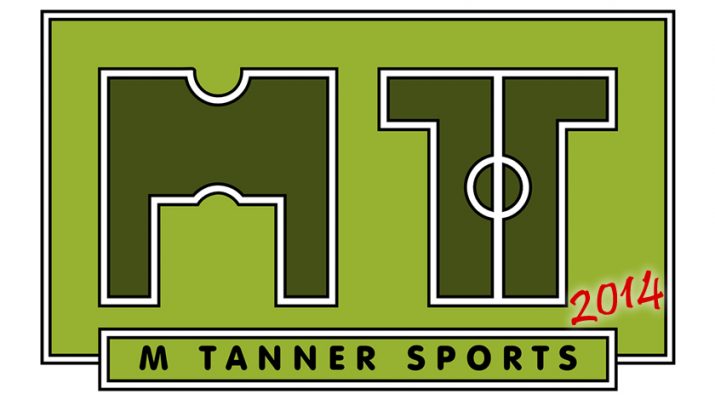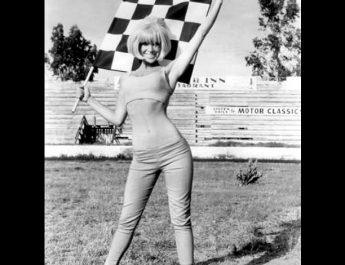M Tanner Sports managed to catch up with aspiring yoga instructor Jenny Mace, from Eastbourne, to ask her about yoga and to see if it can help athletes and sportsmen/women.
Her answers are merely little snippets of what could be written about yoga- just a little taster.
What is Yoga and why do you need to practice Yoga?
Yoga is all about living peacefully, calmly and healthily – bringing everything into alignment within ourselves. The physical practice of yoga (hatha yoga), which is what is most commonly known about and practiced in the west, is but one mini aspect of the whole of yoga which actually encompasses the mental, emotional, physical and spiritual.
Due to this wider scope of what yoga is really all about, assuming a teacher will bring at least a little taste of these things into their sessions, then I would say all that is really needed is at least a little bit of an open mind. I would also recommend, at least at first, finding a great teacher who resonates with you in order to practice safely and with support.
So once you have that open mind can any age/shape do it?
Most definitely! Yoga is accessible for and can be tailored to suit everyone. It’s not all about being able to do particular postures but rather listening to the body, accepting the point where you are at now; treating yourself with respect and doing what you can.
But on the posters for classes there are always attractive people on there, that’s why it’s strange that you say any shape or size can do it!
It’s a shame that broadly-speaking only the ultra-fit are portrayed on promotions for it. I’ve been to quite a few yoga sessions of various kinds and have witnessed all shapes, sizes and ages participating – it’s great! It’s also a very safe and healthy form of physical activity.
How should you prepare for Yoga?
There isn’t much a person needs to do in order to prepare for a yoga session – depending on its intensity. As with all physical activity, it’s advisable to ensure you are as hydrated as possible (especially for Bikram yoga!) and that there has been at least a few hours since eating a meal or large snack. I would say the main preparation would be to organise one’s life so that yoga can be fitted into it and made a priority (especially at first when it is not habitual).
What equipment do you need? There is a mass market for yoga mats, bricks and blocks but do you need them all?
I think it’s mostly about preference rather than need per se. The most widely-used and basic piece of equipment is of course the yoga mat. If you are practicing at a communal class then often the teacher/centre will provide all the various pieces of equipment as desired by each participant. Some people believe in refraining from using too many extra props, believing it’s unnecessary. Others believe that it can be of great benefit, especially to us in the West who typically have much less flexible bodies than those where yoga originated from. Iyengar is a form of yoga that places emphasis on using props, believing that they help us to explore our bodies’ movement to a greater extent and with a greater extent of safety and comfort. Props are especially useful for those new to yoga, the sick, the elderly and/or people with disabilities.
Do you ever need weights or an exercise ball? They are often displayed next to each other in sports shops and online.
To my experience and knowledge, weights and exercise balls are not part of yoga. I guess it’s just because yoga is seen as a sport by many people, thus it’s placed near to these items in shops.
What clothing do you need to wear? Is it tight fitting sportswear or flowing alternative wear?
Anything you can move freely in with as it can be quite active. Also you shouldn’t worry about your clothing as long as you are comfortable.
How long should one session be?
There are no limitations to this. It depends on the intensity of the session, the time that a teacher has available and who they are wishing to target. There are day-long yoga workshops as well as mini 45-minute (probably ½ hour too) lunchtime yoga sessions. Even 5 minutes of physical yoga practice is fantastic. There are some sessions of hatha yoga that follow a particular sequence of postures, such as Bikram; these sessions should always ideally be 1.5 hours in length.
Sounds like quite a work out but why is it good mentally?
Yoga helps to manage and calm the mind as opposed to letting it be like a wild and cheeky monkey swinging hither and tither from various branches as it can be sometimes! It encourages each individual to foster a positive and peaceful mindset which can free us from some mental and emotional obstacles that can hinder our progress and happiness in life.
So why would a professional athlete do it?
Many do, I believe! Yoga would help a professional athlete prepare in a holistic manner for their peak performance – ensuring they are in optimal physical form as well as optimal mental and emotional form. Yoga is also a healing and restorative form of physical practice; thus, it’s great for avoiding and healing any injuries.
Is meditation the same as Yoga? Are the two linked?
Hatha yoga is often thought of as a moving meditation. It’s also thought of as a preparation for sitting meditation, so they are definitely linked. The notion is that the more we move and cleanse our bodies (ie. through hatha yoga) then the more we can be in tune with our bodies, the more awareness we can have about ourselves and the more able we’ll be able to sit in meditation. Meditation focuses on quietening the mind to enable a more peaceful and connected state of being and yoga aims for this too. Both also involve awareness and focus on the breath.
How does it differ if you practice on your own to in a group session?
This may be different for different people and for different levels of experience. I personally loved having the support of lovely yoga teachers when I first started practicing – and I still do! It’s also great to share the practice with fellow participants and feel a connection with them too. A lot of people can find it tricky to find the motivation to practice on their own at home but I think the deeper one continues on the yogic path the more often you’ll want to practice – again, it’s just a case of listening to and respecting what the body wants and needs.
You also learn massively from practicing with others. I think it’s great to practice certain postures you are comfortable with and well-versed with on your own and a good idea to focus on particular asanas you’d like to move deeper into as they will unlikely be practiced at every yoga session you go to as there are many thousands of yoga postures that teachers can choose from!
Finally which is better indoor yoga at your local sports centre or outdoor?
I would personally say neither of those options – I find yoga sessions at a yoga studio best of all, they focus on all elements of yoga; not just the physical practice. Outside practice is fantastic though and I definitely dabble in that near to the sea here in Eastbourne in the summer.
Many thanks to Jenny Mace for taking time out of her schedule to speak to M Tanner Sports. This has answered some basic yoga questions and you can certainly see why Ryan Giggs, practices yoga and why he is still playing top flight football in his 40s.
How did you find this article? Is there anything you want discuss further? Please don’t hesitate to get in touch!
Eastbourne Yoga offer courses to become an instructor
John Moore Sports has a range of clothing and Yoga accessories.





